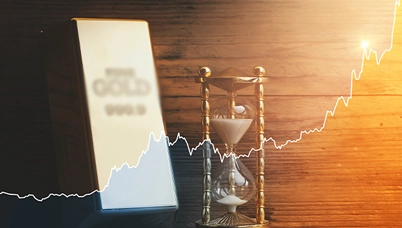Shanghai Tunes: Is China now a problem?
Posted On Sunday, Jan 01, 1950
When the US sneezes, goes the saying, the world catches a cold.
Actually, make that pneumonia.
The way the world had frozen and went into cold storage in the year 2008 and the first few months of this year put all fears of global warming behind us. In fact, it was the reported sighting of green shoots and the warm weather that makes the ice thaw which led to the bounce in global stock markets since March, 2009.
Between July 31, 2007 (just before the Bear Stearns funds went bust) and March 2009, global stock markets as depicted by the MSCI World Index (MXWD in Graph 1) had lost nearly -60% in US Dollars. China (SHCOMP) and India (SENSEX) had done a little better - and all markets have seen a good recovery since then. But, till August 19th, 2009 the markets are still deeply in negative territory. India is down -19%; China down -29%, and the MSCI World Index is down -28% when measured in US Dollars.
 |
| Source: Bloomberg |
Part of the reason for this bounce - in stocks and in our mood - was the fact that governments and central banks were seen to be winning the battle against depression and a collapse in global trade.
The reverse economic engines
Also, China was seen as the champion of what I refer to as a reverse economic engine. The country which provided the low cost goods that fuelled the global consumption boom was now itself a consumer. China would purchase the higher priced and more skilled goods that the western world had to offer. From Boeing aircraft to GE nuclear plants to Caterpillar excavators to Siemens rail systems: China was a buyer.
Furthermore, China was also buying as much raw material as it could, wherever it could. India and other emerging economies are also seen as add-ons to this reverse economic engine story but China dominates by its sheer size.
China's USD 524 billion stimulus package is legendary stuff now and proof of how governments can seize the bull by the horn and turn adversary into opportunity. A friend told me once that in Chinese, the word for crisis is the same as the word for opportunity.
So, on a trip to Shanghai in May, I was dazzled by all the bright lights of the marvellous sky scrapers and the high energy of bustling Shanghai. But, in meetings with some companies and research analysts, I was puzzled by what seemed like a contradiction.
China had a huge export business.
The USA and the western world were slowing down and consumption was falling rapidly.
There were reports of job losses to the tune of 20 million because of the closure of the export businesses - from soft toys to socks to electronics.
True, China had this USD 524 billion stimulus plan which was spurring rural consumption and investment in infrastructure - about 15% of GDP to be spent over 2 years (by contrast, India's stimulus package is 3%). Clearly a positive for China.
But bank lending was up some 100% compared to the previous year, 2008.
So, was the price of real estate rising in Shanghai and were the stock markets moving so rapidly because:
- the earnings of companies were rebounding with the stimulus package? Loss of profits from exports was offset by growth in profits from domestic sales. This meant a real economic boom where employees get higher salaries and increase consumption?
- money was finding its way from banks to companies to stock markets? Pretty normal in situations where bank lending grows so rapidly - and we have seen that in India many times in the past. With so many factories closed in China and a case of oversupply, I could not imagine a case of companies making investments in manufacturing capacity
- of a combination of the above two?
Not easy to get answers to these sort of questions in China.
But I did return troubled and not entirely convinced about the China boom as reflected by the surge in prices of property and stocks.
The Chinese turn American?
The representative of a steel company from Latin America which had not exported steel to China since 2004 but had renewed exports this year told me: We think China is buying all the steel it would normally have consumed in 2010 (next year), in this current year 2009. In 2010, they may buy all the steel they were originally to consume in 2011. But how long can they keep this up? How long can they bring tomorrow's consumption today?
Long enough.
Or at least as long as people don't dig deep and ask the right questions.
China is doing as country, what Americans did as a people.
But with a difference.
Most Americans could not buy their new car or new home. But "cheap" money allowed them to finance what they could not afford to buy.
China is buying what it should buy tomorrow, today.
Just like the Americans did.
The huge difference is that China can afford to pay for it.
It may also be a sneaky way of converting its paper horde of USD into real goods and services. Steel and iron ore lying in idle and empty Chinese shipyards is worth a lot more than US Treasury paper. And the rents on warehousing space and shipping costs have declined by over 50% from their peaks.
That is the good news: the reverse engine theory seems intact and China's buying is more real than the buying of the Americans.
The bad news - or fear - remains: did much of the money find its way into stock market speculation? And what happens as the China stock market tanks further? The Shanghai Index has already lost -20% from its peak - the classic definition of a "bear market".
 |
| Source: Bloomberg |
 |
| Source: Bloomberg |
If the financial stock market bubble deflates in China - there will be losses for sure. And the usual cycle will start.
Retail investors go bust, brokers that they owed money to go bust, the banks who lend the brokers money go bust, some international group will have lent some Chinese group some money and that international group will be in trouble, the central bank of that country will step in....you get the picture.
It happened in Mexico in December 1994.
Then the Asian Banking Crisis in 1997.
Then LTCM and the Russian default in 1998.
Then the tech bubble in 2000.
Then this home loan and sub-prime credit bubble the world is still coping with.
Economically, China may be an engine but if its financial markets are in trouble, the global flows of capital will again be under threat.
Just as they were in September 2008 after Lehman declared bankruptcy.
So the short term capital is reacting violently, in fear of tomorrow.
The Indian stock market - and others globally - are dancing to Shanghai's tunes.
And more dances to go.
With the rain playing truant, the drought is another theme we are dancing to in India.
Maybe the choreographers at Bollywood can help us find a way to smoothen these pretty jarring steps.
But till they figure that out, hang on to your seat belts - turbulence ahead - but stay with the allocation in Table 1 below and stay calm through the ride.
| Quantum Long Term Equity Fund | Quantum Gold Fund (NSE symbol: QGOLDHALF) | Quantum Liquid Fund | |
| Why you should own it: | An investment for the future and an opportunity to profit from the long term economic growth in India | A hedge against a global financial crisis and an "insurance" for your portfolioA hedge against a global financial crisis and an "insurance" for your portfolio | Cash in hand for any emergency uses but should get better returns than a savings account in a bank |
| Suggested allocation | 80 % | 20% | Keep aside money to meet your expenses for 6 months to 2 years |
Disclaimer : Past performance may or may not be sustained in the future. Mutual Fund investments are subject to market risks, fluctuation in NAV's and uncertainty of dividend distributions. Please read offer documents of the relevant schemes carefully before making any investments. Click here for the detailed risk factors and statutory information"
Ajit Dayal, the author is a Director in Quantum Information Services Private Limited and Quantum Asset Management Company Private Limited. Views expressed in this article are entirely those of the author and may not be regarded as views of the Quantum Mutual Fund or Quantum Asset Management Company Private Limited or Quantum Information Services Private Limited.
Mutual Fund Investments are subject to market risks. Please read the offer documents of the respective schemes before making any investments
Note: This article was first carried on www.equitymaster.com
Related Posts
-

Understanding GIPS: The Global Standard for Performance Reporting
Posted On Wednesday, Jan 14, 2026
In the world of investing, everyone loves a good performance number.
Read More -

Equity Monthly for January 2026
Posted On Friday, Jan 02, 2026
Indian markets remained range-bound in 2025
Read More -

Gold Monthly for January 2026
Posted On Thursday, Jan 01, 2026
Gold Market Review and Outlook: 2025–2026
Read More



